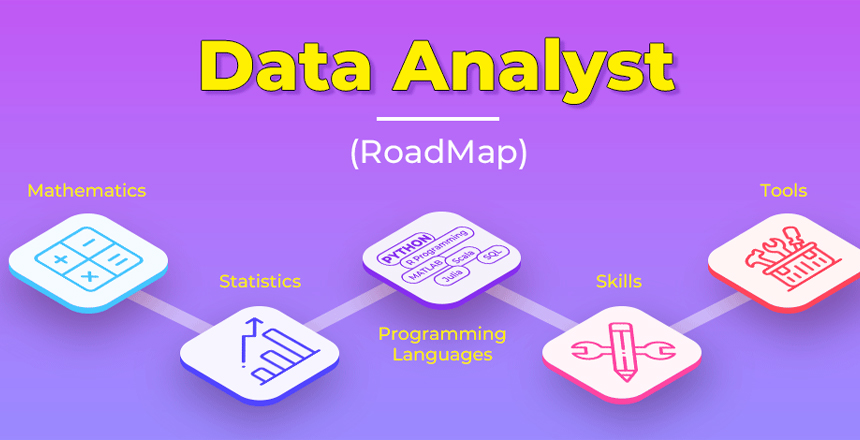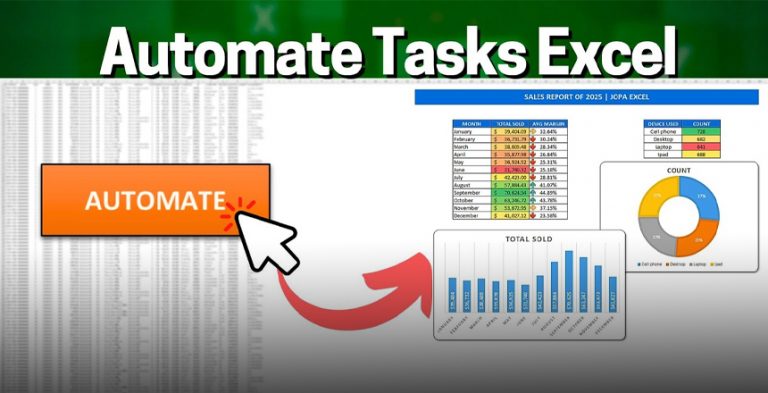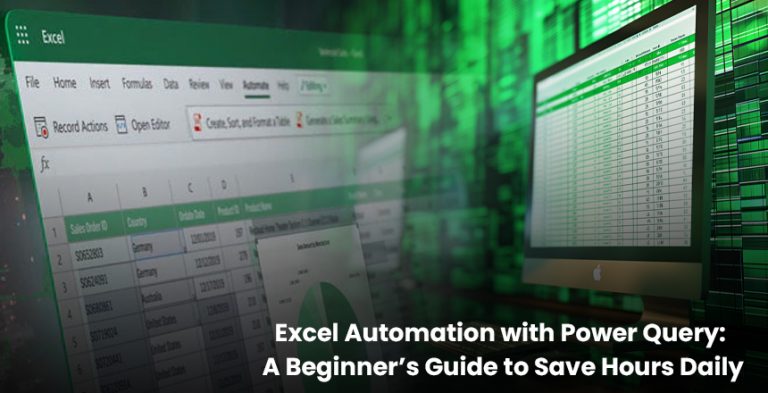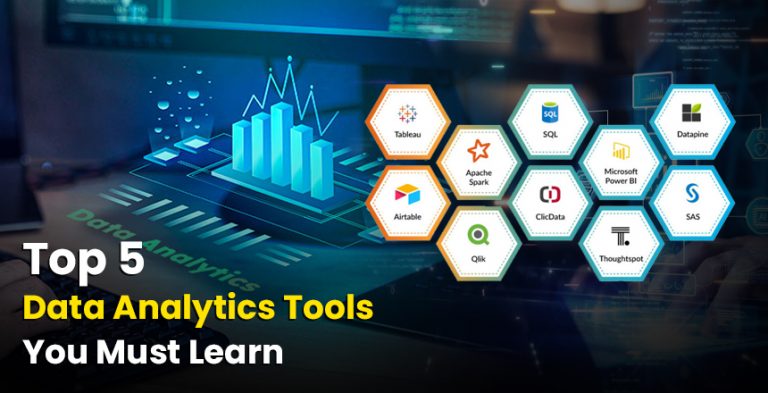You want to become a data analyst in 2025 but do not know where to start? You are not the only one. The bright side is that you do not have to have a technical degree or know how to code to join. You may be a student, you may be a fresher, or in a completely different profession, but you can turn into data analyst with a proper step-by-step guide, and that is where this guide will serve you.
Today, we would like to divide it into the individual phases: Zero to job-ready.
Step 1: Knowing What a Data Analyst does
It is useful to understand what it is that a data analyst does before jumping into the learning tools or courses. A data analyst examines data, such as customer information, sales figures, or web traffic and transforms it into valuable information to businesses.
Say, a business can move along the following line of questions:
- Why were our sales less during the previous month?
- What is the trendiest product among students?
- What was the most efficient advertising campaign?
The tools, logic, and a bit of creativity will be used by the data analyst to reveal the answers. These are not only about numbers, but it is about understanding these numbers.
Step 2: Learn Excel First- Tool 1
Begin with excel when you are new to data. Nearly every office uses it, and it is more powerful than most people can imagine.
The following are the Excel skills you require:
- Such complex functions as IF, VLOOKUP, XLOOKUP, INDEXMATCH
- The use of pivot tables to summarize a large amount of data
- Conditional formatting of important value
- Programs to clean the information to repair the mistakes and use your data to complete work
- Creation of basic dashboards on chart and slicers
All this may be studied online within 3-4 weeks provided a regular practice. High Excel skills are still a requirement in most entry-level analyst jobs in India.
Step 3: SQL -To work with Databases
When you believe you are comfortable with Excel, then you can learn SQL. SQL is used so that you will be able to get data directly from giant databases of big companies. This will be what you will be interrogating questions such as who are our top 10 customers in Delhi in the last month.
Start with:
- Proof of the pudding: SELECT, SEARCH, ORDER BY
- The Percentage of GROUP BY totals and averages assessment
- Joining data by using JOINs
- Using CASE statement to process logic
- Exercising the actual problems of business
It is very common to come across every company requiring that you use SQL and in interviews, it is also tested. You have to know how to write and understand queries, but you do not have to be perfect.
Step 4: Learn to Be a Skilled Power BI User to Show Your Insights in the Proper Way
Learn power BI, the software to transform data into files such as charts, graphs, dashboards after excel and SQL. It makes others visualize your work and it is not necessary to look at raw numbers.
What not to pay attention to:
- SQL/excel data import Importing SQL/excel data
- Power Query Cleaning information
- Graphs (graphs, tables, slices) design
- Calculations with the help of DAX
- Design of full dashboards and reports
It is very effective at Indian businesses, and it is the superstar on your CV- particularly when you are trying to get into an analyst, MIS or reporting job.
Step 5 (Optional, and, in my mind, helpful): Try Basic Python
You do not need to actually learn Python to secure your first job but learning some fundamental things can be useful at a later point in time. Python can be used to automate or do work on bigger datasets.
Start with:
- Simple code (variable, loop, method) writing
- Pandas and NumPy
- Basic Matplotlib and Seaborn graphing Plotting basic plots in Matplotlib or Seaborn
Once you start, excel, SQL, and Power BI are the more important ones to learn. Get back to Python when you feel more confident.
Step 6: the percentage of project displaying your capability
It is time to put the tools into practice now that you know them. Do little projects that demonstrate your eminence at things like:
- A Power b icon or excel sales dash-board
- An SQL-Based customer data analysis
- Rephrase the following sentence. Use the same language as the original sentence.
If you wish to upload, do it on GITHub or create a portfolio site. This assists the employers to know that you are serious and ready to work.
Step 7: Request the Entry Level Job and Prepare the interviews
A position to seek would be:
- Younger Data Analyst
- Junior Business Analyst
- MIS Executive
- Reporting Analyst
- Operations Analyst
Go through typical queries in Excel and SQL and get prepared to discuss your projects well, before the interviews. The course level you did in college will not matter much to most companies, they will be interested in your practical skills.
Step 8: Always Learn and Get Better
After getting your first job, continue to accumulate more skills. This is what you can find out next:
- Excel tips and Torpedoes
- How to show more DAX in Power BI
- Python automation
- Storytelling of Data and presentation
- SQL optimization and best practice
The more you develop the more positions you will be able to transition to such as senior analyst, business intelligence analyst, or even data scientist in the future.
Final Thoughts
In order to become a data analyst in 2025, one does not have to be a tech-savvy person. The only thing you require is a clear line action and continuity. Start in Excel working towards SQL, and learn Power BI all the way, and actually become a part of the dynamic projects. With determination, you can train in a span of a few months and be job-ready.
The need is huge, the compensation is high and the growth is legitimate. It is time to stop contemplating on changing your career and start doing it.








